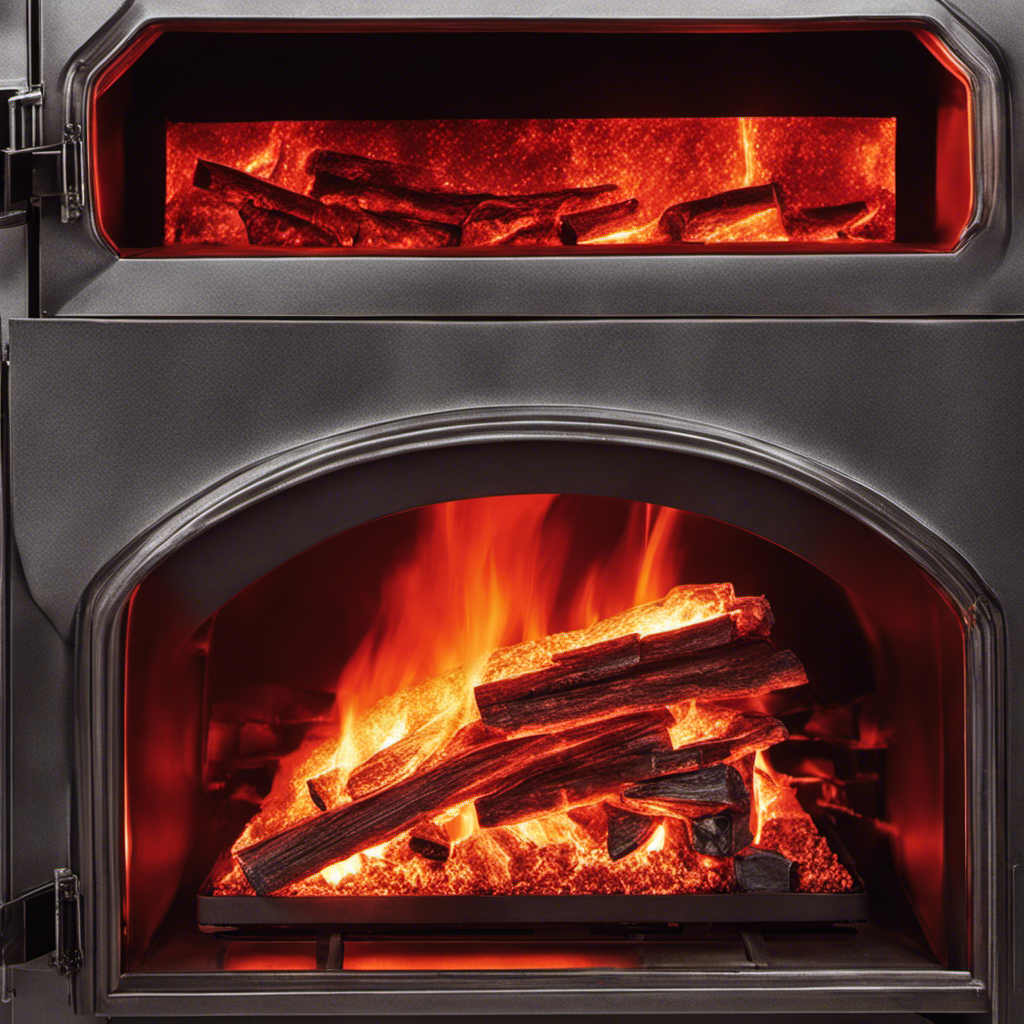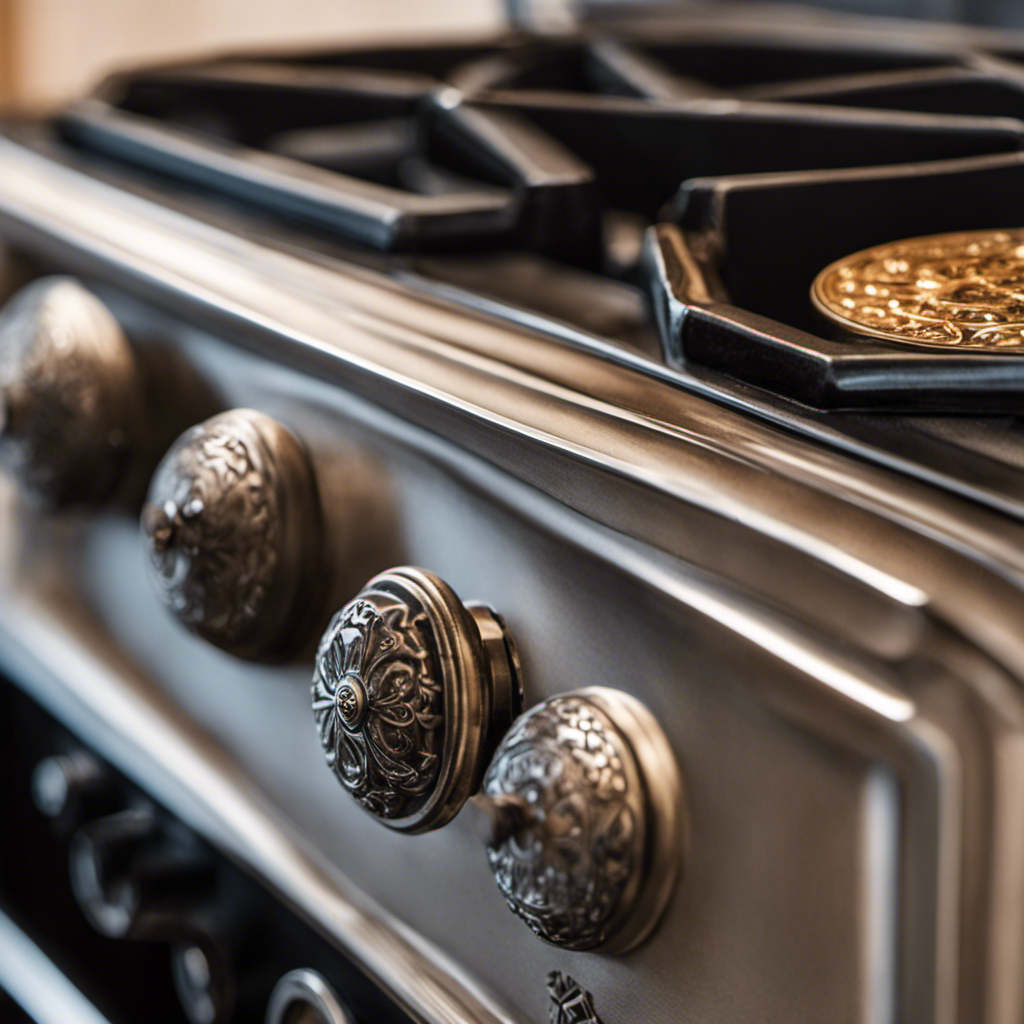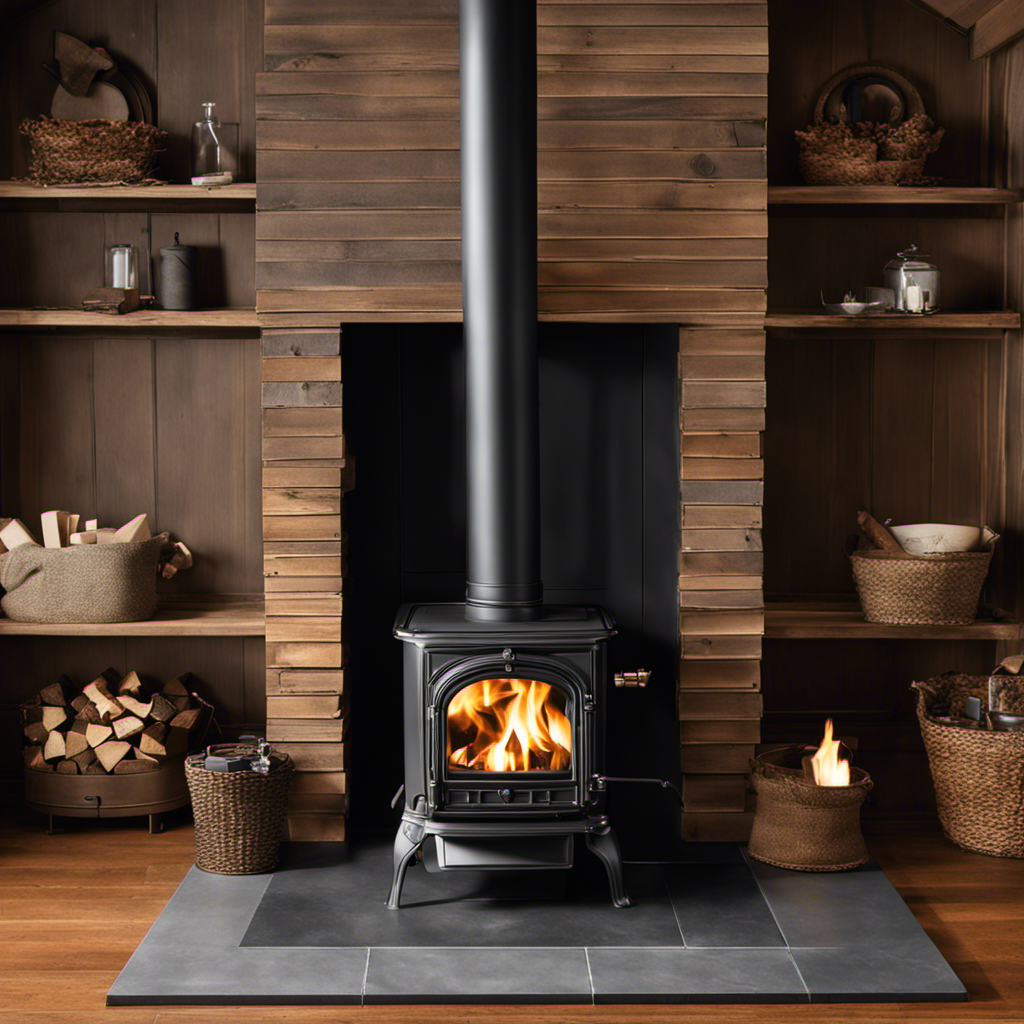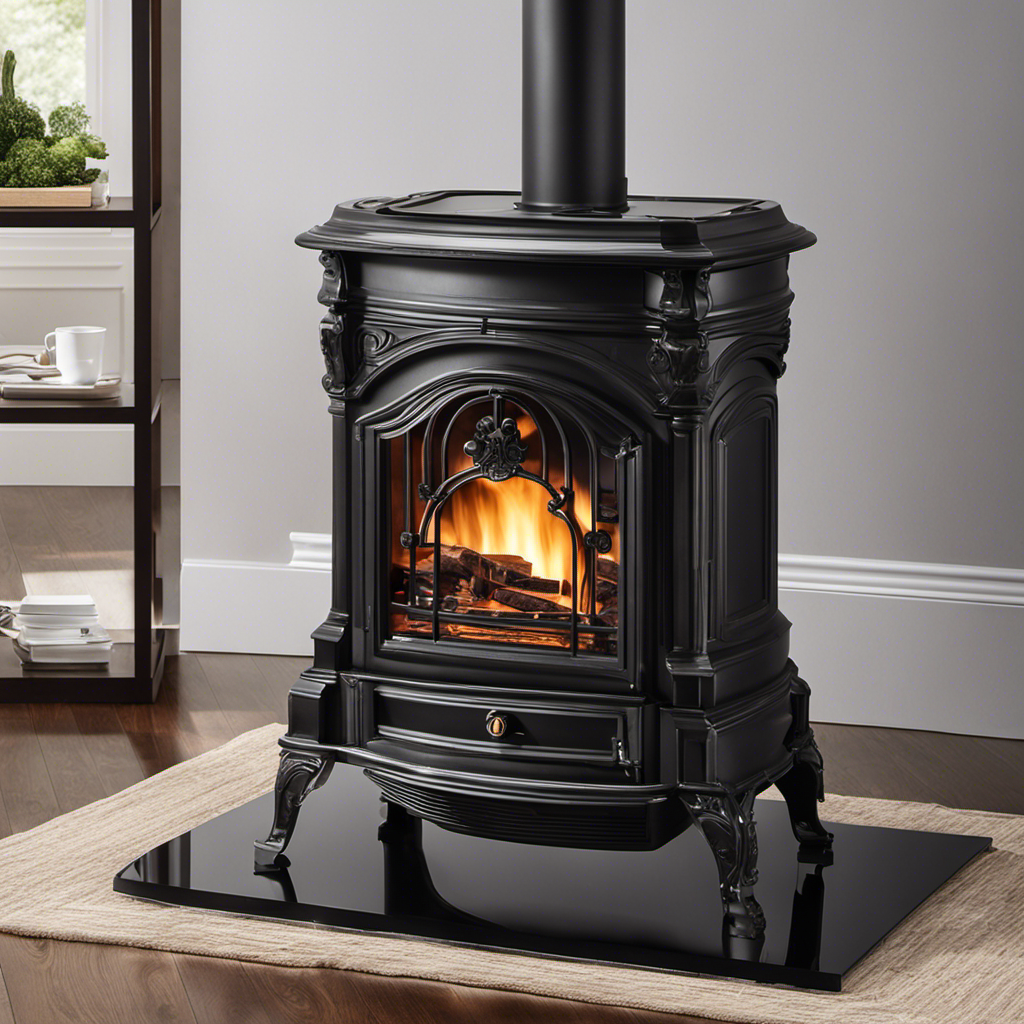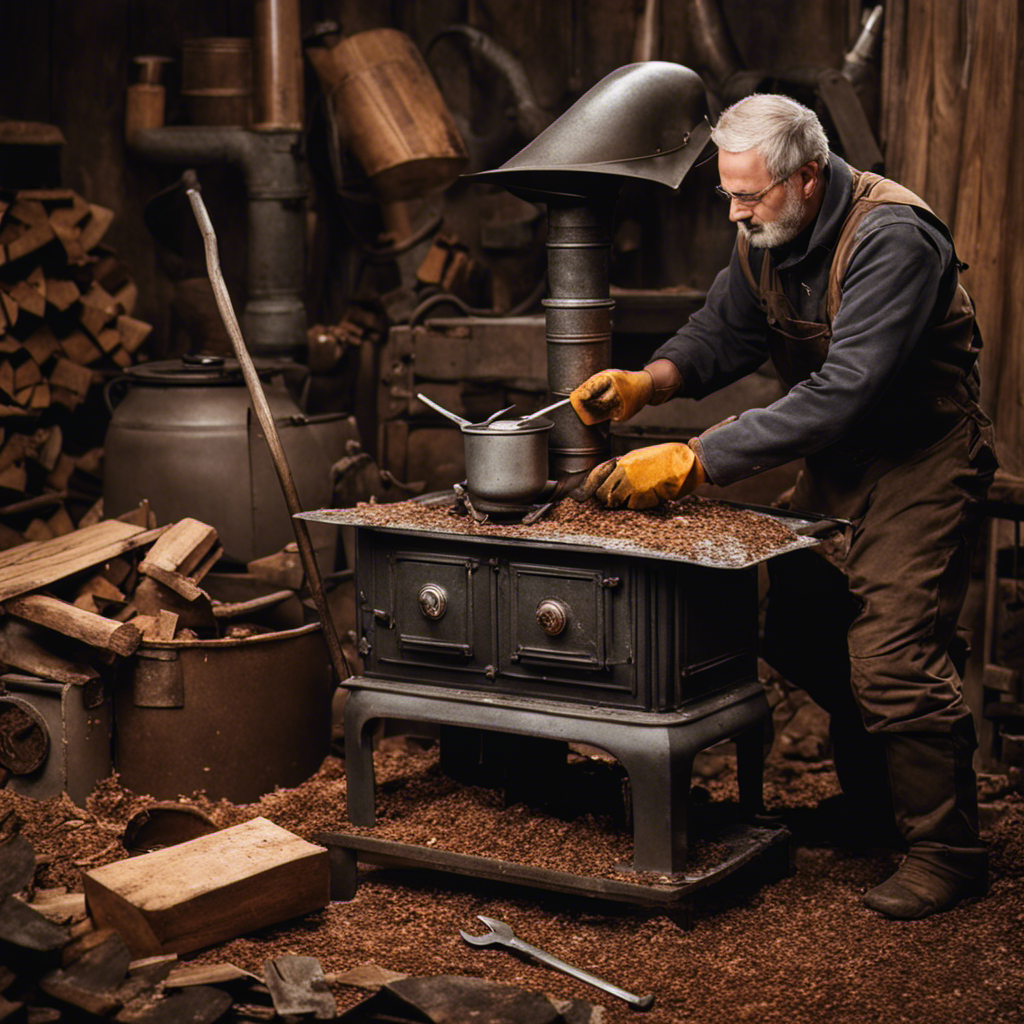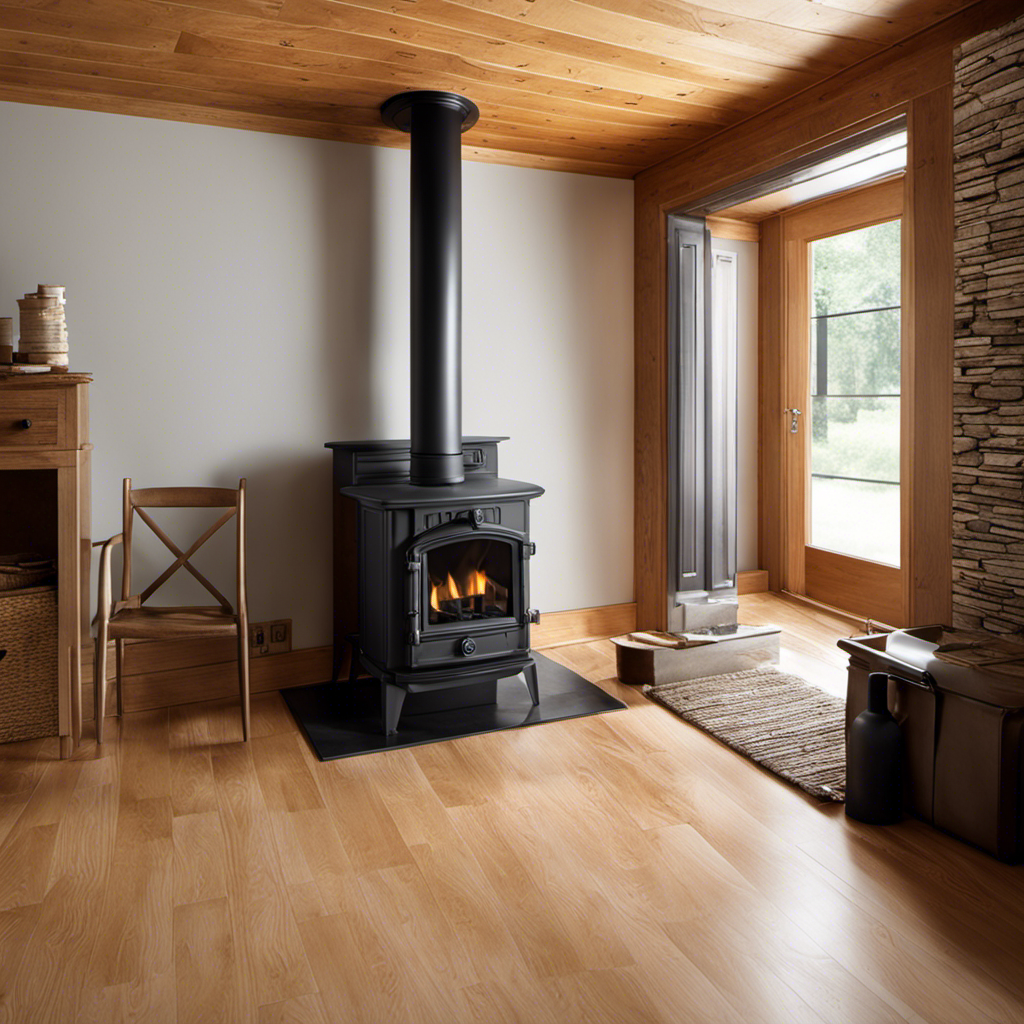Protective Gear: Essential Safety Equipment for Wood Stove Users
As a wood stove enthusiast, I know that staying safe is paramount. Just like a knight donning armor before battle, we must equip ourselves with essential protective gear. From fire-resistant clothing to heat-resistant gloves, safety glasses, and respiratory protection, these items shield us from potential harm.
Regular maintenance and inspections, along with childproofing measures, further ensure our well-being.
Join me as I delve into the world of protective gear, exploring the importance of these essential safety equipment for wood stove users.
Key Takeaways
- Proper installation, maintenance, and cleaning of wood stoves are essential to prevent gas leaks, fires, and chimney fires.
- Fire-resistant gear such as boots, helmets, and clothing provide protection against burns and injuries.
- Heat-resistant gloves with insulation and extended cuffs are necessary to protect hands from burns and hazards.
- Safety glasses or goggles shield the eyes from sparks, debris, and smoke, reducing the risk of eye injuries.
Understanding the Risks
I need to understand the risks associated with using a wood stove before I can properly protect myself. Wood stoves can provide warmth and comfort, but they also come with their share of fire hazards. It’s essential to be aware of these risks and take necessary safety precautions to prevent any accidents or disasters.
One of the major fire hazards associated with wood stoves is improper installation. It’s crucial to have a professional install your wood stove to ensure it’s correctly positioned and connected to the chimney. Any leaks or blockages in the chimney can lead to a buildup of dangerous gases, such as carbon monoxide, which can be life-threatening.
Another risk to be mindful of is the ignition of surrounding combustible materials. Wood stoves can radiate a significant amount of heat, and if placed too close to flammable objects or materials, they can easily catch fire. It’s vital to maintain a safe distance between the stove and any potential fire hazards, such as curtains, furniture, or wooden walls.
Additionally, not properly maintaining and cleaning your wood stove can also pose a risk. Creosote, a byproduct of burning wood, can accumulate in the chimney and stove pipe, increasing the chances of a chimney fire. Regular cleaning and inspection of the chimney are essential to prevent the buildup of creosote and ensure the proper functioning of the wood stove.
To mitigate these fire hazards, there are several safety precautions that wood stove users should follow. Firstly, it’s crucial to have working smoke detectors and carbon monoxide detectors installed in your home. These devices can alert you in case of a fire or a dangerous gas leak. Secondly, always use a fire-resistant barrier around your wood stove to prevent any accidental contact with combustible materials. Additionally, make sure to keep a fire extinguisher nearby and have it regularly checked and maintained.
Fire-Resistant Clothing
Wearing fire-resistant clothing is crucial for staying safe while using a wood stove. It provides an essential layer of protection against the intense heat and potential hazards that can arise from working with a wood stove. Here are three key items to consider when it comes to fire-resistant clothing:
-
Fire-Resistant Boots: When working with a wood stove, it’s important to protect your feet from potential burns. Fire-resistant boots are designed to withstand high temperatures and provide insulation against heat. They’re made from materials such as leather or rubber that are resistant to flames and can prevent burns caused by hot embers or sparks.
-
Head Protection: Your head is particularly vulnerable to heat and flying debris when using a wood stove. Wearing a fire-resistant helmet or hat can protect your head from burns and reduce the risk of injury. These items are made from flame-resistant materials and often come with additional features such as face shields or goggles for added protection.
-
Fire-Resistant Clothing: In addition to boots and head protection, wearing fire-resistant clothing is essential. These garments are made from specialized materials that are designed to resist ignition and withstand high temperatures. They provide a barrier between your skin and potential sources of fire, reducing the risk of burns and injuries.
Heat-Resistant Gloves
When using a wood stove, it’s important to have heat-resistant gloves to protect my hands from burns and potential hazards. Fireproof mitts are essential for ensuring hand protection while handling hot materials and operating the wood stove. These gloves are designed to withstand high temperatures, providing a barrier between my skin and the intense heat.
Fireproof mitts are made from specialized materials such as leather, Kevlar, or a combination of both. These materials offer excellent heat resistance, preventing burns and injuries. The gloves are typically lined with an insulating material to further enhance their protective capabilities. This insulation helps to keep my hands cool and comfortable, even when exposed to extreme temperatures.
When selecting heat-resistant gloves, it’s important to choose a pair that fits snugly and allows for dexterity. This ensures that I can easily grip and maneuver objects while wearing the gloves. Additionally, gloves with extended cuffs provide added protection to my wrists and lower arms.
Safety Glasses or Goggles
Fireproof mitts are important, but it’s also crucial to wear safety glasses or goggles to protect my eyes from potential hazards. When working with a wood stove or any other type of fire, there are several reasons why wearing safety glasses or goggles is essential:
-
Protection from flying sparks and debris: The intense heat from a wood stove can cause sparks and debris to fly out unexpectedly. Safety glasses or goggles with impact-resistant lenses can shield my eyes from these potential hazards.
-
Prevention of eye irritation and burns: The smoke and ash produced by a wood stove can irritate the eyes and potentially cause burns. Wearing safety glasses or goggles with fire-resistant face shields can create a barrier between my eyes and the harmful substances, ensuring my eyes stay safe and comfortable.
-
Ensuring proper fit for maximum protection: It’s crucial to choose safety glasses or goggles that fit properly. Ill-fitting eyewear can easily slip off or allow debris to enter. By selecting the right size and adjusting the straps accordingly, I can ensure a snug and secure fit, minimizing the risk of eye injuries.
Respiratory Protection
I make sure to wear a respirator to protect my lungs from smoke and harmful particles while working with a wood stove. It’s crucial to prioritize respiratory protection when dealing with any type of wood burning.
Wood stoves can emit various pollutants, including smoke, dust, and fine particles, which can pose serious health risks if inhaled. That’s why I rely on my respirator to filter out these harmful substances and ensure that I can work in a safe environment.
Respiratory filters are a key component of the respirator. These filters trap and remove airborne particles, including those generated by the wood stove. They’re designed to meet specific standards, such as N95 or N99, which indicate their level of filtration efficiency. These high-quality filters ensure that I’m adequately protected from the harmful pollutants present in the wood stove’s emissions.
Proper mask fitting is also crucial for effective respiratory protection. A well-fitted respirator creates a seal around the face, preventing any unfiltered air from entering. It’s important to choose a respirator that fits snugly and comfortably, and to adjust the straps accordingly. By ensuring a proper fit, I can guarantee that no harmful particles can bypass the mask and reach my lungs.
Carbon Monoxide Detectors
Having a functioning carbon monoxide detector is crucial for detecting this odorless and potentially deadly gas in my home. Carbon monoxide poisoning is a serious health risk that can lead to symptoms such as headaches, dizziness, nausea, confusion, and even death. Early warning systems, such as carbon monoxide detectors, are essential to ensure the safety of my household.
Here are three reasons why carbon monoxide detectors are so important:
-
Detection: Carbon monoxide is colorless, odorless, and tasteless, making it impossible to detect without the help of a carbon monoxide detector. These devices are designed to sound an alarm when they detect high levels of carbon monoxide in the air, giving me an early warning to take necessary action.
-
Peace of mind: By having a carbon monoxide detector installed in my home, I can have peace of mind knowing that my family and I are protected from the dangers of carbon monoxide poisoning. This allows me to sleep better at night, knowing that I’ve a reliable early warning system in place.
-
Compliance with safety regulations: Many jurisdictions have laws or regulations in place that require the installation of carbon monoxide detectors in residential properties. By having a functioning carbon monoxide detector, I not only ensure the safety of my household but also comply with these regulations, avoiding potential penalties.
Fire Extinguishers
Now let’s talk about fire extinguishers, an essential safety equipment for wood stove users. As someone who’s experienced the devastating effects of a fire firsthand, I can’t stress enough the importance of having a fire extinguisher readily available in your home.
When it comes to fire extinguisher placement, it’s crucial to have them strategically located throughout your house. Place one near the wood stove itself, ensuring it’s easily accessible in case of an emergency. Additionally, consider having extinguishers in other high-risk areas such as the kitchen, garage, and bedrooms. By having them within reach, you can quickly respond to a fire and potentially prevent it from spreading.
Equally important is fire extinguisher maintenance. Regularly inspect your extinguishers to ensure they’re in good working condition. Check the pressure gauge to ensure it’s within the recommended range, and inspect the nozzle and hose for any signs of damage or blockage. If you notice any issues, promptly replace or repair the extinguisher.
Remember, having a fire extinguisher isn’t enough; you must also know how to use it. Familiarize yourself with the instructions and practice using it so that you’re prepared in case of an emergency.
Heat-Resistant Floor Protection
As someone who’s experienced a fire before, I understand the importance of heat-resistant floor protection when using a wood stove. It’s crucial to take necessary precautions to prevent any chance of fire accidents.
Here are three key points to consider when it comes to heat-resistant floor protection:
-
Fireproof materials: When installing a wood stove, it’s essential to choose fireproof materials for the flooring. Materials like ceramic tiles, stone, or concrete are excellent choices as they can withstand high temperatures without catching fire or melting. These materials provide a protective layer that prevents any heat transfer to the underlying floor.
-
Proper installation: Ensuring proper installation of the heat-resistant flooring is equally important. Engaging a professional to install the flooring is highly recommended. They’ve the expertise to properly secure and seal the materials, minimizing any gaps or vulnerabilities that could compromise the fire protection.
-
Regular maintenance: Regularly inspecting and maintaining the heat-resistant floor protection is crucial. Over time, the flooring may develop cracks or other damages that could compromise its effectiveness. It’s essential to address any issues promptly to ensure the floor protection remains intact.
By following these guidelines for fireproof materials and proper installation, you can significantly reduce the risk of fire accidents caused by wood stoves.
Now, let’s move on to the next section, where we’ll discuss childproofing measures to ensure the safety of the little ones in your home.
Childproofing Measures
When childproofing my home, it’s important to consider measures that ensure the safety of my little ones. As a parent, I want to create a safe environment where my children can explore and play without any potential hazards. Here are some childproofing measures and safety precautions that I have implemented in my own home:
| Childproofing Measures | Safety Precautions |
|---|---|
| Installing safety gates | Prevent access to stairs or potentially dangerous areas |
| Securing furniture | Avoid tipping hazards by anchoring heavy furniture to the wall |
| Covering electrical outlets | Protect children from electrical shocks by using outlet covers |
By installing safety gates, I can prevent access to stairs or other potentially dangerous areas in my home. Securing furniture to the wall ensures that there are no tipping hazards that could harm my children. Additionally, covering electrical outlets with outlet covers helps protect them from electrical shocks. These childproofing measures are essential in creating a safe environment for my little ones.
In order to maintain the safety of my home, regular maintenance and inspections are necessary. By conducting routine checks, I can identify any potential hazards or areas that may need further childproofing. Taking the time to inspect and maintain the childproofing measures in my home ensures that my children are always protected and safe.
Regular Maintenance and Inspections
Regular maintenance and inspections are important to ensure the ongoing safety of my home and the well-being of my children. As a responsible homeowner and parent, I understand the significance of keeping my home in good condition and ensuring that all safety measures are in place. Here are three key reasons why regular maintenance and safety inspections are crucial:
-
Preventing potential hazards: Regular maintenance allows me to identify and address any potential hazards in my home. By inspecting electrical systems, plumbing, and appliances, I can identify issues such as faulty wiring or leaks that could pose a safety risk. By addressing these problems promptly, I can prevent accidents or injuries.
-
Extending the lifespan of my home: Regular maintenance helps me keep my home in good condition, which in turn extends its lifespan. By addressing minor issues before they become major problems, I can avoid costly repairs in the future. This not only saves me money but also ensures that my home remains a safe and comfortable environment for my family.
-
Peace of mind: Regular maintenance and safety inspections provide me with peace of mind, knowing that my home is safe and secure. By taking proactive measures to maintain my home, I can reduce the risk of accidents or emergencies. This allows me to relax and enjoy time with my family, knowing that we’re in a safe and well-maintained environment.
Frequently Asked Questions
Can I Use Regular Clothing While Operating a Wood Stove, or Is Fire-Resistant Clothing Necessary?
Regular clothing can be used while operating a wood stove, but it’s highly recommended to wear fire-resistant clothing for added protection. Fire-resistant clothing is designed to resist ignition and provide a barrier against heat and flames. It reduces the risk of burns and can prevent serious injuries.
Although there are alternatives to fire-resistant clothing, such as wool or leather garments, they may not provide the same level of protection. It’s always better to prioritize safety and opt for fire-resistant clothing when operating a wood stove.
What Are the Different Types of Respiratory Protection Available for Wood Stove Users?
When it comes to wood stove safety, one of the most important things to consider is respiratory protection.
There are several types of respirator options available for wood stove users, each with their own benefits. Wearing a mask can help filter out harmful particles and gases, ensuring cleaner air to breathe.
It’s crucial to choose the right type of respiratory protection for your specific needs to ensure maximum safety while operating a wood stove.
How Often Should I Replace the Carbon Monoxide Detector in My Home if I Use a Wood Stove Regularly?
Replacing the carbon monoxide detector regularly is crucial for the safety of wood stove users. It’s important to maintain the detector to ensure it’s functioning properly and able to detect any potential leaks.
Regular maintenance, such as replacing the batteries and testing the detector, should be done at least once a year. This ensures that you and your family are protected from the dangers of carbon monoxide poisoning.
Don’t underestimate the importance of regular maintenance for your safety.
Are There Any Specific Types of Fire Extinguishers That Are Recommended for Wood Stove Users?
There are several fire extinguisher options that are recommended for wood stove users. It’s important to have a fire extinguisher that’s specifically designed for use on wood fires. Look for one that’s labeled as suitable for Class A fires.
Additionally, it’s crucial to wear fire resistant clothing when operating a wood stove. This can help protect against burns and keep you safe while using your wood stove.
What Are Some Common Childproofing Measures That Should Be Taken When Using a Wood Stove?
When it comes to using a wood stove, childproofing measures are crucial for ensuring the safety of little ones. Safety precautions such as installing a safety gate or barrier around the stove, using stove knob covers, and securing any stove accessories can help prevent accidents.
It’s important to create a safe and child-friendly environment, so taking these childproofing measures is essential. By doing so, you can have peace of mind knowing that your child is protected from potential hazards.
Conclusion
In conclusion, investing in protective gear is essential for wood stove users to ensure their safety. By wearing fire-resistant clothing, heat-resistant gloves, safety glasses or goggles, and using respiratory protection, users can minimize the risks associated with wood stove use.
Additionally, having fire extinguishers and heat-resistant floor protection, as well as childproofing measures, are crucial safety measures. Regular maintenance and inspections further ensure the proper functioning of the wood stove.
Remember, taking these precautions can make all the difference in keeping you safe while enjoying the warmth of a wood stove.




